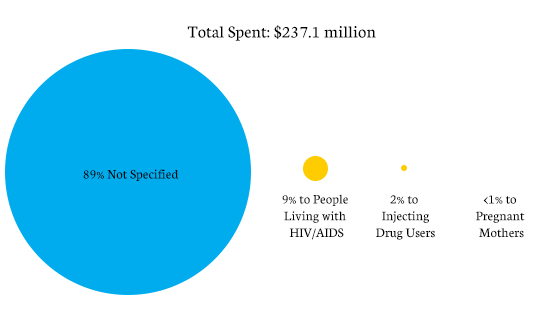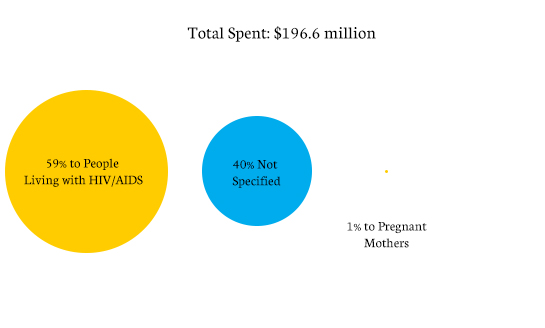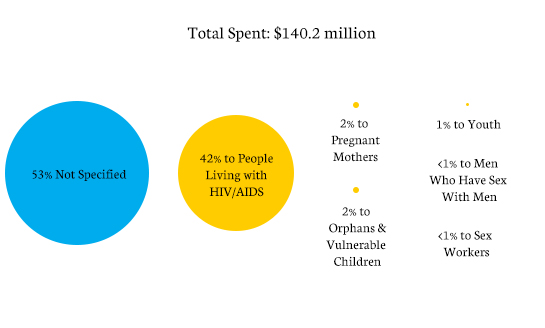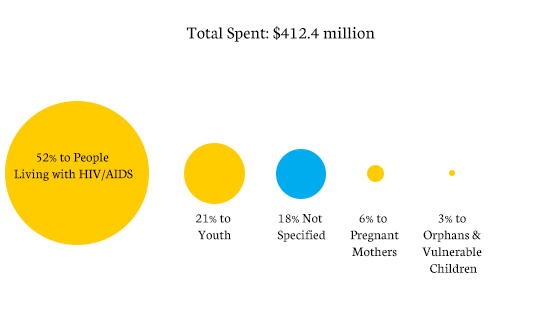To get more health for its money, the Global Fund must start at the beginning: what programs are eligible for financial support, and who should it go to? Spending money on interventions that are not targeted to key populations, not cost-effective, or—worse—not even known to be effective is a missed opportunity to improve health.
Global health funders could save more than $340 million over the next five years by purchasing more cost-effective bed nets.
We Know What Works, but It’s Not Always Funded
Fortunately, thanks to a boom in scientific and technological advances over the past decade we now understand what works to prevent and treat HIV, TB, and malaria, and who to target. Policymakers no longer need to experiment or rely on trial-and-error approaches to define target populations or choose which medical commodities to purchase.
Still, funding doesn’t always go to the interventions and commodities known to be the most effective and cost-effective. Many Global Fund HIV grants favor prevention activities with questionable effects on health outcomes, such as behavior change communication and training, over proven medical interventions such as male circumcision, which has high potential to reduce HIV transmission. Similarly, countries currently receive funding for over 200 different types of bed nets—including ones with customized labeling and nonstandard sizes—even though no evidence suggests that such specifications are critical for disease prevention. Global health funders could save more than $340 million over the next five years by purchasing more cost-effective bed nets.
HIV programs often exclude people at highest risk: sex workers, injecting drug users and men who have sex with men.
Underinvestment in high-risk populations also appears to be widespread. This is particularly true for HIV prevention, where key populations have sometimes been left out—including sex workers, injecting drug users, and men who have sex with men. The Global Fund has a progressive policy to address these key populations, but it’s unclear if the policy influences allocation of funding in practice. In a sample of Global Fund grant agreements from five countries (Ethiopia, Nigeria, South Africa, India, and the Philippines) the majority of funding from 2002-2012 was either earmarked for the general population, or did not indicate a specific target group. This is particularly stark in India and the Philippines, where the epidemic is highly concentrated in a few high-risk populations.
Global Fund Investments by Target Population, 2002 – 2012





In the past, the Global Fund has asked countries to decide how funds are allocated despite their often limited capacity to do so and potentially without addressing political or economic conflicts of interest, like political or religious objections to working with the most-at-risk populations.
Economic models increase transparency by showing who gets what, when and why.Kalipso Chalkidou, Founding Director, NICE International, UK
Recommendations
There are a number of steps the Global Fund can take to overcome these obstacles and better enable countries to determine where to allocate their funding for the greatest health impact. Many of these steps would also empower countries to innovate and experiment with new ways to reach key populations with effective and cost effective interventions.
Provide a menu of interventions
The Global Fund should provide a menu of effective and cost-effective interventions and commodities for recipients to choose from when applying for a grant. If a country prefers to invest in an intervention not included on the list, they may opt out by providing local analysis showing that another intervention is more effective and cost-effective in its specific context. Recipients would also be asked to rigorously assess the effectiveness and cost-effectiveness of the intervention to add to the overall evidence base and help inform future grants.
Identify and Target Key Populations with Appropriate Interventions
An intervention may be cost-effective in theory but not in practice if it is not appropriately tailored to reach key populations. The Global Fund should require that countries use available data to describe how they would distribute interventions within a country across key populations – including age, gender, places of residence and geographic regions that represent the main sources of transmission and infection in the country.
Increase the Use of Modeling
The Global Fund should make funding available for countries to conduct modeling exercises that estimate the impact of different interventions in their local context. This would help grant recipients determine the best possible intervention mix for their respective countries, and set expectations for impact and practical performance targets.
It’s imperative that global health donors increase transparency on the distribution of funds.
Increase Transparency on the Allocation of Resources
The Global Fund is never the only actor funding HIV, TB, and malaria programs in a country. At a minimum, the countries’ own governments are making similar investments, and often other donors are also supporting programs. So it’s imperative that the Global Fund and other donors increase transparency at least to each other, if not to the public, on the planned and actual distribution of funds. Sharing this information will make it possible to analyze how funding is used across a country, and allow funding decisions by any single actors to be made with full knowledge of what others are doing.

Tools